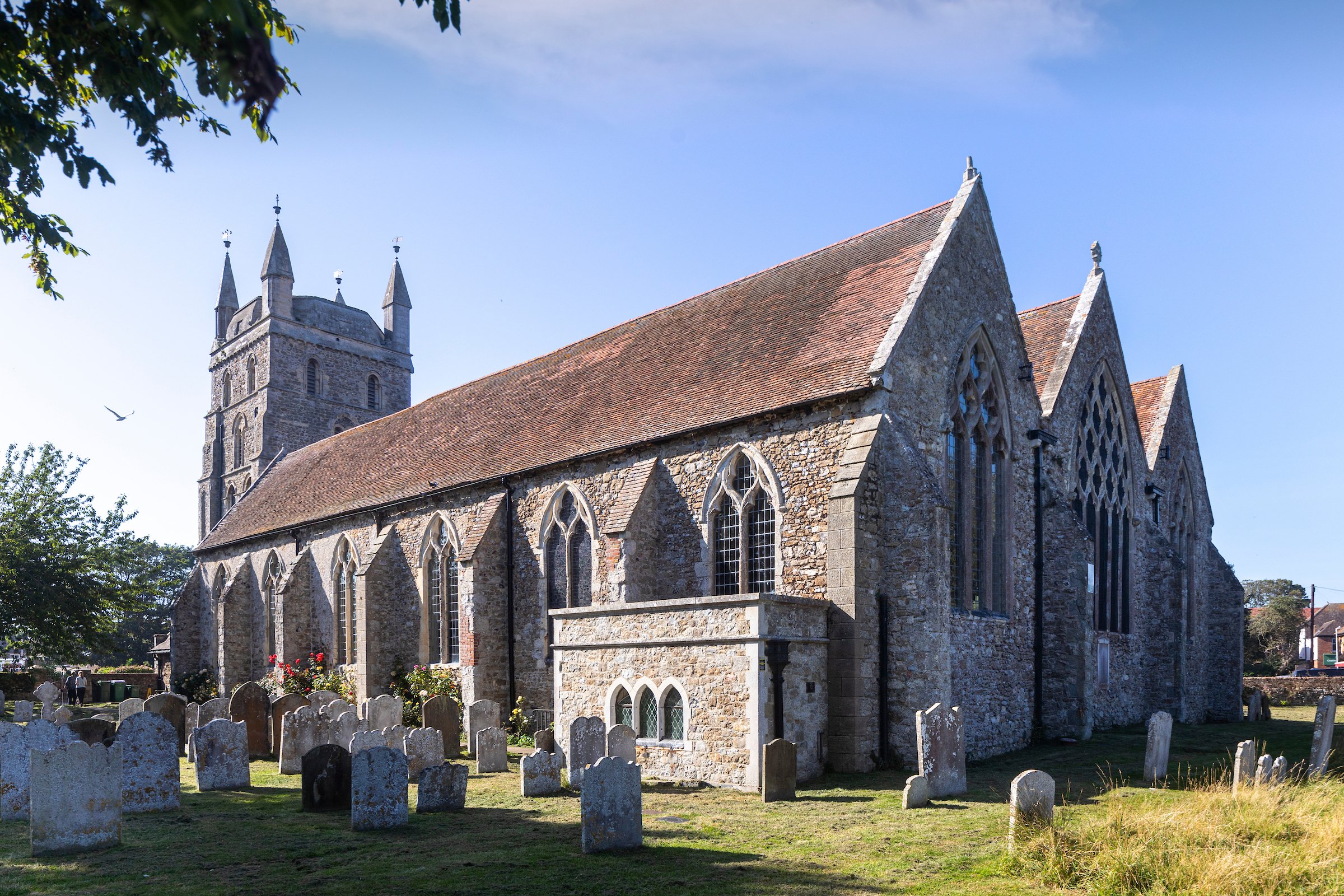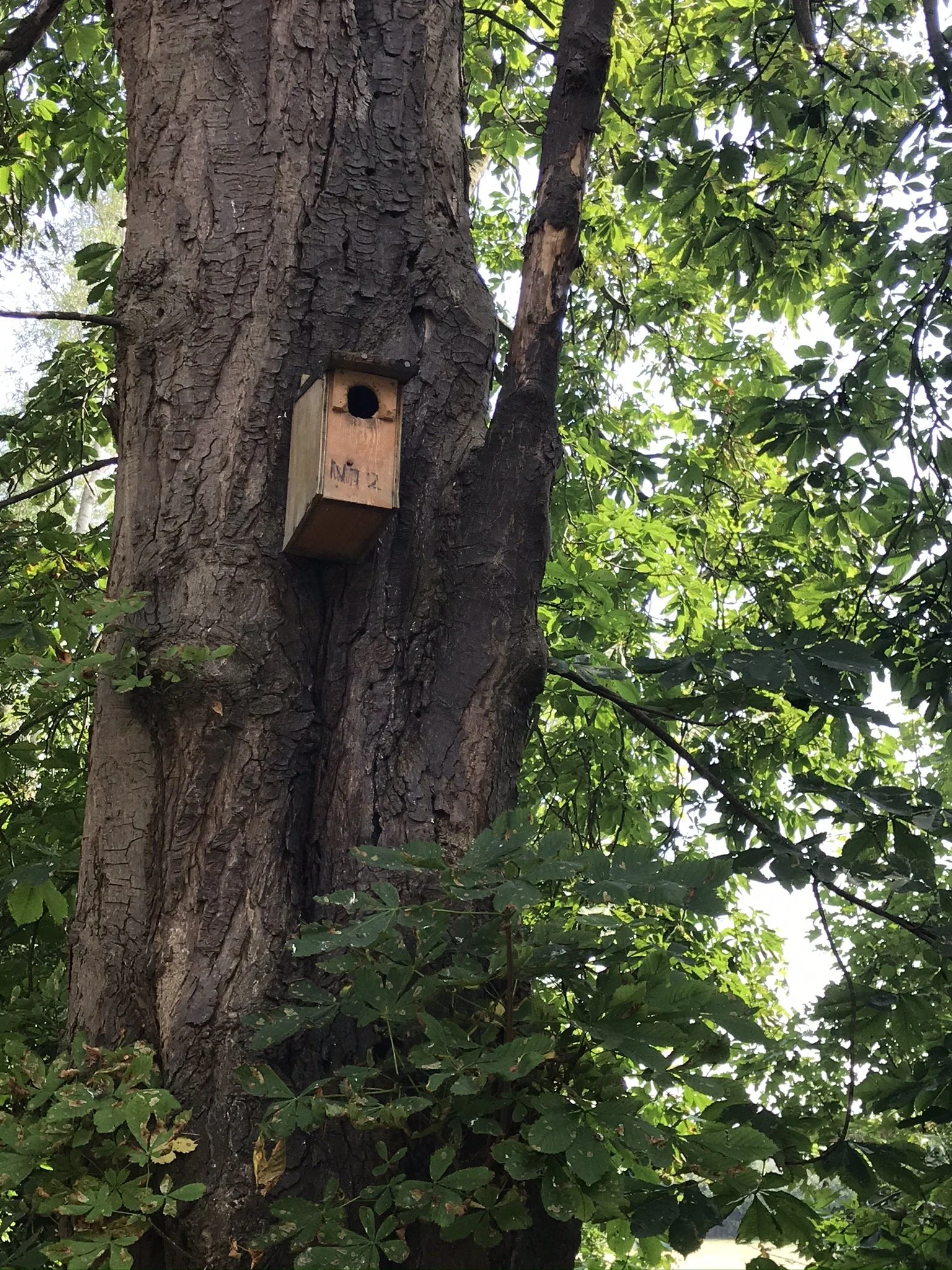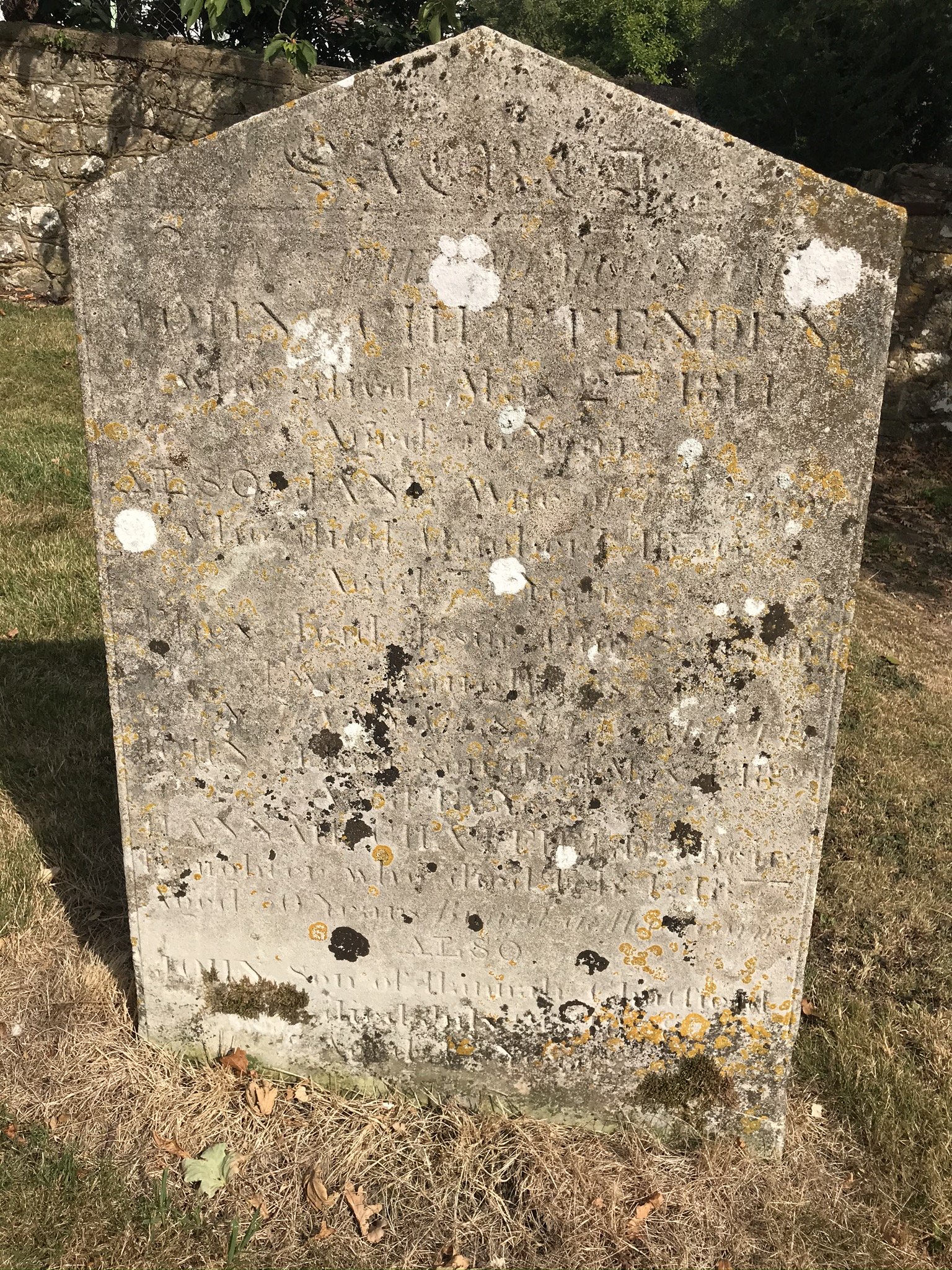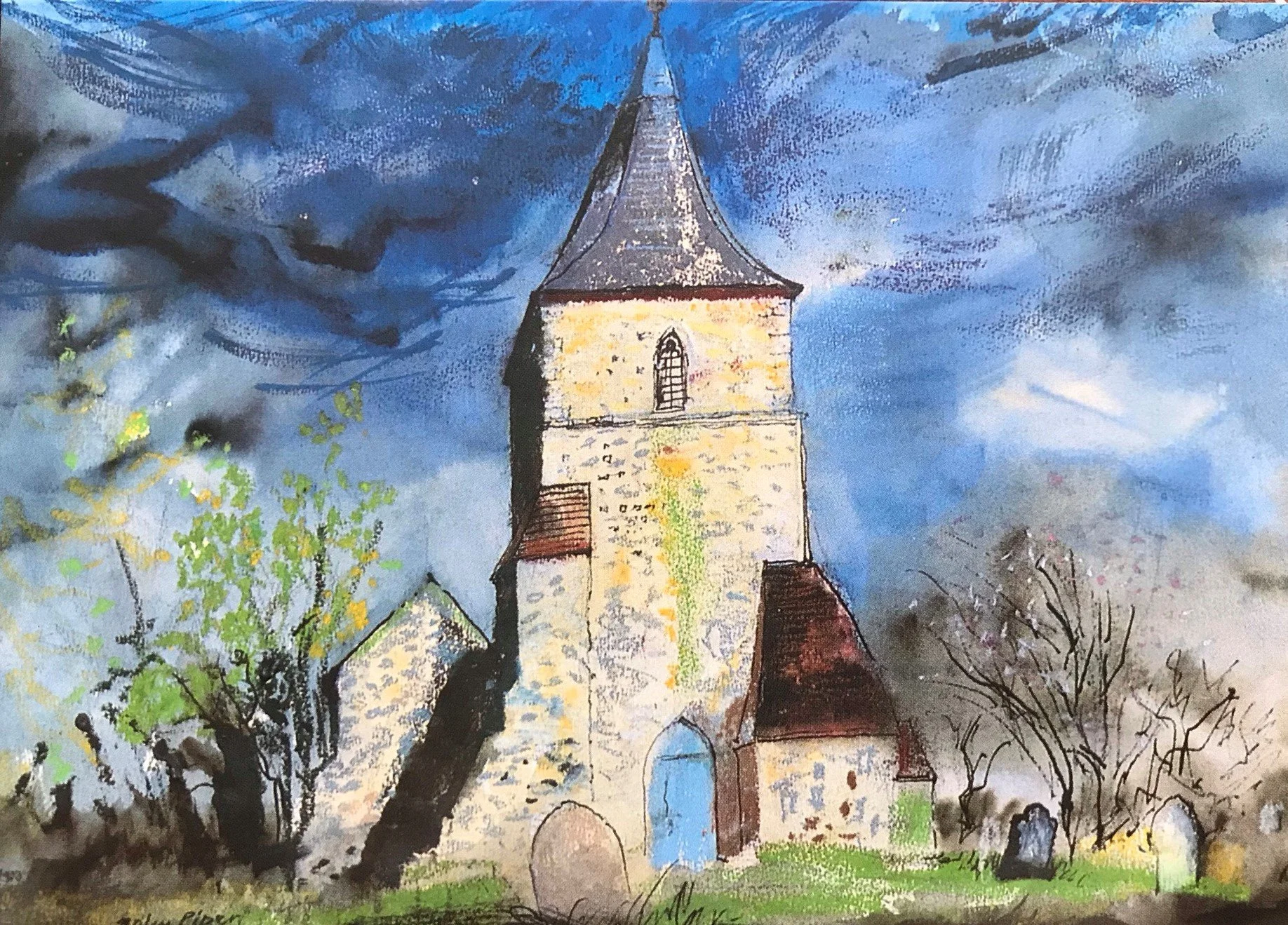Introducing RMHCT Council Member Celia Heritage
THIS IS AN ARCHIVED STORY
Continuing our series of articles reflecting on 40 years of the Romney Marsh Historic Churches Trust, RMHCT’s Project Assistant, Didier Rochard, spoke to Council Member and historian Celia Heritage about the importance of the marsh churches and her hopes for the future of the Trust.
Celia Heritage joined the RMHCT Council shortly before the country went into lockdown during the Covid-19 pandemic. She has served on the PCC of St George’s Church at Ivychurch for around 12 years and she has been principal keyholder for over 15 years, opening and locking its doors each day until very recently when the task was shared out.
Without the dedication of local PCC volunteers like Celia, it would be impossible to keep all 14 churches on Romney Marsh open and available to the community.
“Most of the churches are in serious need of volunteers! We’d encourage local people with any spare time to get involved. It can be difficult to meet people in a rural area like the marsh, particularly in older age. The churches and the Trust are a great way to connect with the local community and meet like-minded people - there’s a community around them – and you don’t have to be a churchgoer.”
As a professional historian and genealogist with a special interest in churches, burial practice and churchyards, Celia’s skills and expertise are invaluable to the Trust. The author of several books and numerous articles across a large range of historical topics, she has run her own genealogy business for many years and lectured at home and abroad. She also worked for Ancestry.com as a research manager. Through her own company she has delivered courses and lectures for over a decade, as well as undertaking independent research for private clients. Her interest in churches began in the 1980s when she started tracing her own family history, with visits to cemeteries and churchyards. In the many years since, Celia has written three books, two of these commissioned by Pen & Sword Books. The first is a guide to using death records in family history and the second an in-depth study of the history of cemeteries and graveyards. The last included much detail on parish churchyards and gravestones, Celia’s particular interest.
More recently, following life-changing circumstances, Celia retrained as a therapist and now works 1-1 with clients and runs her wonderful Romney Marsh home and gardens as a healing centre where people can come and stay. Although this may appear to be a significant change in direction, Celia highlights that the careers, do in fact, dovetail and increasingly her two careers are merging, with family history being used as a part of mindset coaching and therapy.
“Both address our innate need to belong – and as part of this to understand where we come from - our unique heritage and personal place in the world. Our medieval parish churches provide a sense of continuity and connection to the past. Think of all the people who have passed through their doors over the centuries. Some nights as I lock St. George’s (especially in more recent difficult times) I think of all the other parishioners who have come in the church bearing their individual burdens, sorrows, and joys – and this helps put things into perspective.
Many visitors tell me they love churches, but they frequently prefix this by telling me they are not religious and not churchgoers. Despite this, they find them to be spiritual places (with which I fully concur). For many of us, they offer a feeling of peace, spirituality and a connection to the past. Their history is enduring and that’s important.”
Many people seem to be captivated by the sheer age of the buildings and by their role in providing a navigable line through history. They also help navigate the winding lanes of the marsh! Many can be seen for miles across the flat fields.
Celia highlights that many parish churches would once have been rendered on the outside as well as being richly decorated internally.
“They’re not only symbols of divinity and hope, but they were also literal beacons for people out there on the marsh – they helped with navigation of the landscape – and they still do – especially for walkers and cyclists! Several were important way markers for ships crossing the channel. And of course, they were also status symbols – whether that be wealth of their founder or patrons or a sign of the wealth of a parish.”
The size of many of the marsh churches makes them unmissable in the landscape, but also expensive to maintain. The tower of All Saints’ Lydd, the most southerly town in Kent, is one of the tallest in the county at around 40 metres (132 feet) and it could have been seen from some distance out to sea. St Nicholas at New Romney once stood next to one of England’s most important ports and it would have guided traders from across Northern Europe into harbour. Now around 30 metres high (100 feet), it was once even taller - a spire was added in around 1220 but was sadly pulled down in the 18th Century.
The beacon turrets on several marsh churches such as Snave and Snargate may have allowed for signal fires to be lit to guide locals, or in case of invasion. We know that smugglers used many of the churches to store contraband and no doubt they looked out for the tall church towers as they made their way across the boggy landscape, out of sight of Riding Officers. Such stories still capture the imagination today.
With the Trust currently restructuring its provision for church tours, Celia’s expertise and enthusiasm will be valuable in the years to come, particularly so following the retirement of long-term Council Member John Hendy, the expert narrator of our audio guide. Council Member Nick Hudd has been carrying the tour baton for some time now, along with knowledgeable supporters such as Joan Campbell, author of our guidebook. Celia is looking forward to contributing a further perspective.
“I haven’t yet led a church tour for the Trust yet but have led other tours and other commitments permitting, hope to be involved in the near future. There is so much to say about the marsh churches given their age – condensing around a millennium into a short tour is certainly a challenge!”
Celia is particularly interested in the relationship between the churches, the landscape and the natural world. The churches on the marsh are very much part of the landscape – a landscape that continues to change around them.
“Even now, following the recent heavy rain, the drainage channel (sewer) next to St George’s at Ivychurch is full. When you view the church from the other side of the ditch to many it appears almost like a small castle surrounded by a moat, with its massive stone buttresses.”
The churches and their connection to the landscape have captured the imaginations of countless artists and writers for centuries. Rudyard Kipling’s fairy poem “Brookland Road” famously contains the lines ‘Fairfield church is water-bound, from autumn to the spring’.
“Many people are drawn by the artistic connections, or by their interests in the history, architecture and artefacts. But there’s a whole other side to the churches too – their role in environmental conservation. Many of them are havens for wildlife, particularly the churchyards. They have other users, not just people – the bats, songbirds, owls, and small mammals such as shrews. All sorts of flora and fauna. Many of the churches are surrounded by farmland which is now farmed quite intensively. Whereas the churchyards have been mostly free from pesticides and fertilisers for hundreds of years. They’re little oases and many are older than the churches themselves - earlier wooden Saxon buildings would have existed on some of the sites. The churchyards also have some of the oldest trees on the marsh.”
At a time of biodiversity crisis, this is an important perspective. With 14 ancient church sites spread right across the marsh, the churchyards are of important ecological value. The Marsh Mosaics, on display inside the churches and part-funded by the Trust, highlight some of the iconic and lost species of Romney Marsh.
In Celia’s book “Cemeteries and Graveyards” she highlights the importance of churchyard wildlife conservation and includes the place of lichen in the churchyard. Neither a plant nor a fungus, a lichen is not a single organism but a symbiotic association between a fungus and algae (and/or cyanobacteria). Colonies of interesting and colourful lichens grow on the church walls, roofs and tombstones – many undisturbed for decades, even centuries. .
In recent years, the Fifth Continent Landscape Partnership Scheme worked with several churches to create wildlife-friendly areas, with meadow-planting initiatives and new roosting boxes for bats and birds, including owls. Local BTO bird ringers play a continuing important part in monitoring the bird life in local churchyards and there has been a rise in the breeding of endangered species since a greater number of churches have nurtured wildflower areas or let part of the churchyards run to grass.
“There’s a balance to strike in conservation work. Although some people like a pristine churchyard, we must also consider what we may lose when, for example, restoring a tombstone, cutting back an overgrown shrub or mowing. The Trust can have a role here, not only by supporting the PCCs with funding to carry out the work, but by helping to highlight best practice too. At Ivychurch our wildlife areas have contributed to the establishment of a growing colony of tree sparrows who are currently on the endangered list”
Of course, the churchyards are also places of burial and memory and in her book, Celia explains how burial in the churchyard only became the norm in the ninth century. Her work in genealogy has brought her into contact with people from all over the world who are looking to trace their ancestral roots. In 2022 she oversaw a gravestone restoration project at St George’s which saw repairs to 28 stones (funded by the Trust). One was to Ivychurch’s oldest memorial, a 1631 chest tomb to Robert Drawbridge. Despite having married and had a son named after him in 1625, his only child died 11 days later, and his own death 6 years later ended the Drawbridge line. By contrast, a little distance away is the Victorian anthropomorphic gravestone to local farmer William Bates (d.1852). William married three times and had 55 grandchildren and 14 great grandchildren. His memorial is probably the most popular in terms of ancestral tourism with many people visiting from overseas to pay homage to their roots.
The influence of the marsh churches can be found across the world. When the Trust was first founded, many donations came from America, from people with connections to Romney Marsh. The marsh once had several important ports and of course hardy Romney sheep were exported all over the world. The bloodline of New Zealand’s Romneys can be traced back to the Chittenden flock from St. Mary in the Marsh - James Chittenden’s tombstone in the churchyard there was restored with support from a sheep farmer in New Zealand!
I ask Celia what else she would like people to know about the churches.
“That they are part of their heritage – no matter whether they are churchgoers or not. They are very much part of the secular as well as the religious community – and always have been. St George’s at Ivychurch has been very active in holding secular events, blessed by its large area of pew-free floorspace (the pews were removed in the early 1900s as they had decayed beyond repair). We regularly work with Art in Romney Marsh and the annual JAM On the Marsh festival. Such secular events can help to bring a wide variety of people through the doors. It’s a great thing for them to be used in this way. In the past, these churches would have been the very centre of their communities, with fairs and festival days, so it’s good to see them used by people from different walks of life – faith needn’t be a barrier to people engaging with these incredible buildings.”
Thankfully, the fabric of many of the buildings is now in much better order, meaning such events can take place. Thanks to the dedicated work of the PCCs, the Trust and the generosity of members and donors, several churches now have better facilities, broadening their use.
Celia is excited to see the educational side of RMHCT play a greater part too.
“I’d love to encourage schools and community groups to collaborate with us. The audio guide app, website and mosaics project have been an excellent start, but there is so much more potential. Let’s get more people involved!”
Celia expands by noting a forthcoming major restoration project at St George’s.
“There’s a lot to organise and a bit of a shortage of helpers with the necessary time and energy. The churches are very reliant on a small pool of individuals – new volunteers are always welcome. Without the PCCs and the Trust, so many of the churches could now be derelict – it costs a lot to keep them going, but we must.”
Celia discusses a previous major restoration project at Ivychurch, where the West Window was replaced. This was the first ever project of its kind in the Diocese of Canterbury and significant support from the Trust (further details here).
“There was scaffolding right up to the top of the tower inside the church while the work was carried out. Ivychurch doesn’t have a gallery, so the scaffolding allowed a really great view from high up. I would sometimes climb up the scaffolding and lie on my stomach and look out over the cavernous space like I was floating above it – it brought a totally new perspective and was awe-inspiring.”
Of course, it’s not surprising that St George’s is one of Celia’s favourite churches. Does she have any others I wonder?
“Well, you just must go round them all – there’s so much to see. Old Romney is a favourite – it is homely - small and compact but full of interesting features. Brookland for the wooden belfry and wall paintings. I have too many favourite features to name – the best thing is to go and have a look and see what you connect with!”
We finish by returning to Celia’s point about the sense of belonging that the churches promote.
“They play an important role in providing a fascinating and beautiful gateway to the past – they help bridge that gap and bring history to life – whether it’s your own ancestors or just other people who stood on that same spot before you. Perhaps even more importantly, they also bring us to the present – to the immediate place and our surroundings. A connection to nature that is hard to put into words - birds nesting in the trees, insects buzzing on wildflowers, frogs croaking in the ditches and tiny lichens growing on carved stone faces. They’re so much more than old buildings. Let’s care for them use them and, in our busy world, let’s cherish them as places where we can stop, reflect, take things in and appreciate the planet and what we have.”
Where to next?
Help preserve the medieval churches for future generations: Become a member; Make a donation; or Volunteer with us.
Learn more about the churches with our Church Audio Tour App.
Read further reflections from RMHCT President John Doyle and Founding Council Member Nick Hudd.
Find out more about Celia Heritage’s Family History Work and her therapy work on the marsh.
Author: Didier Rochard
